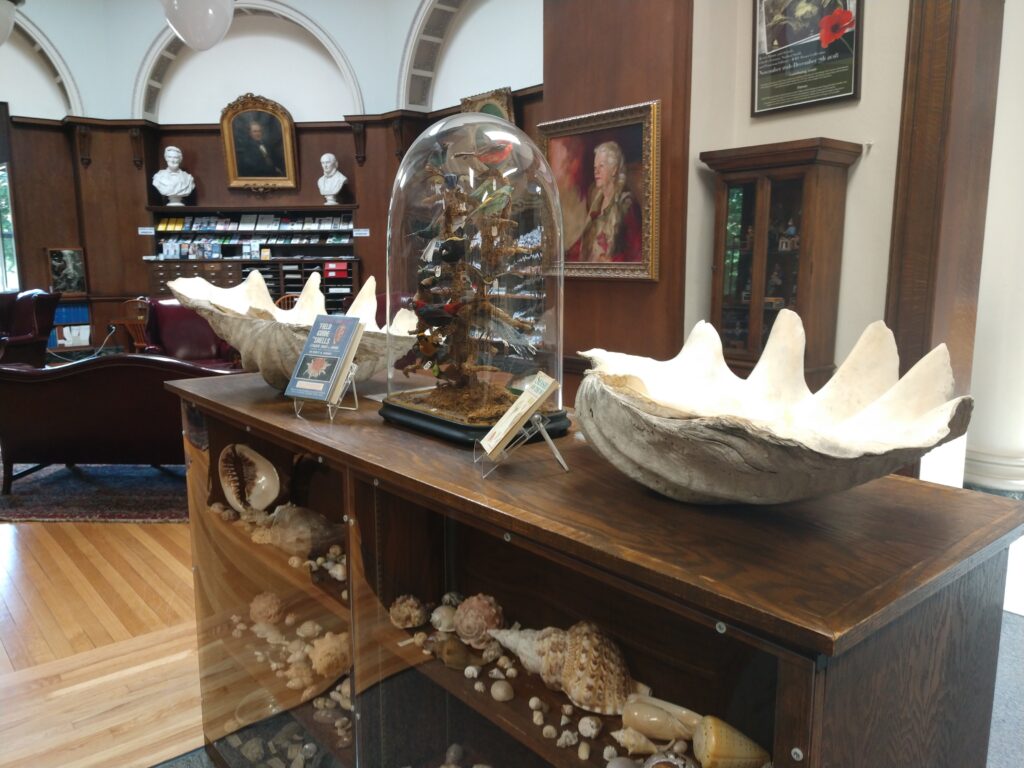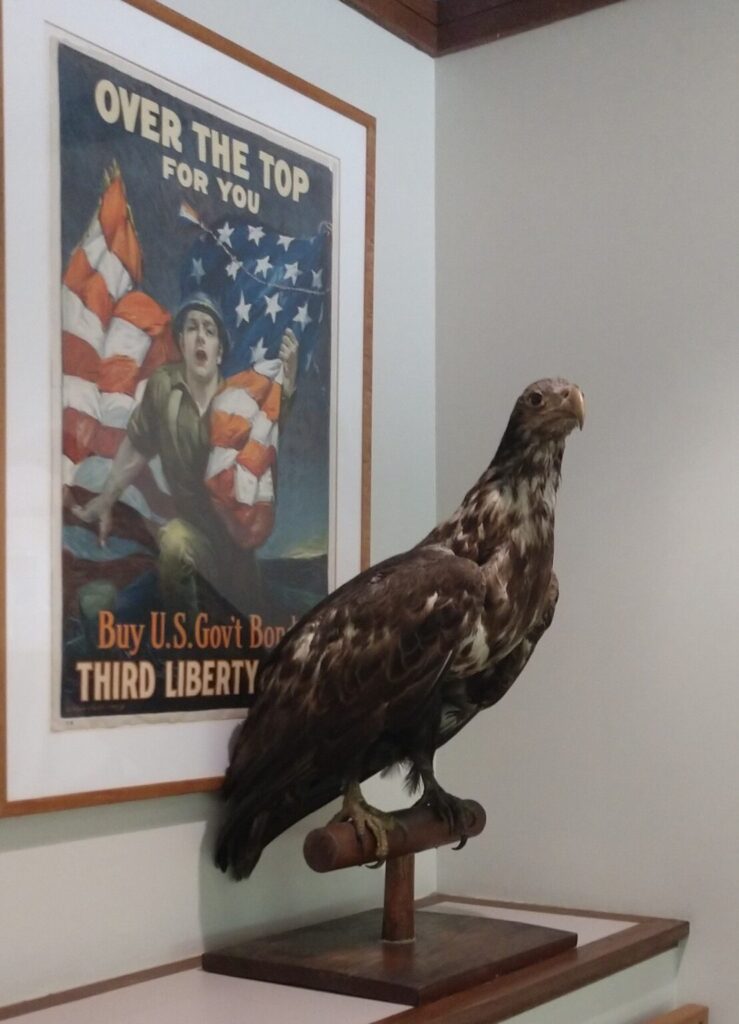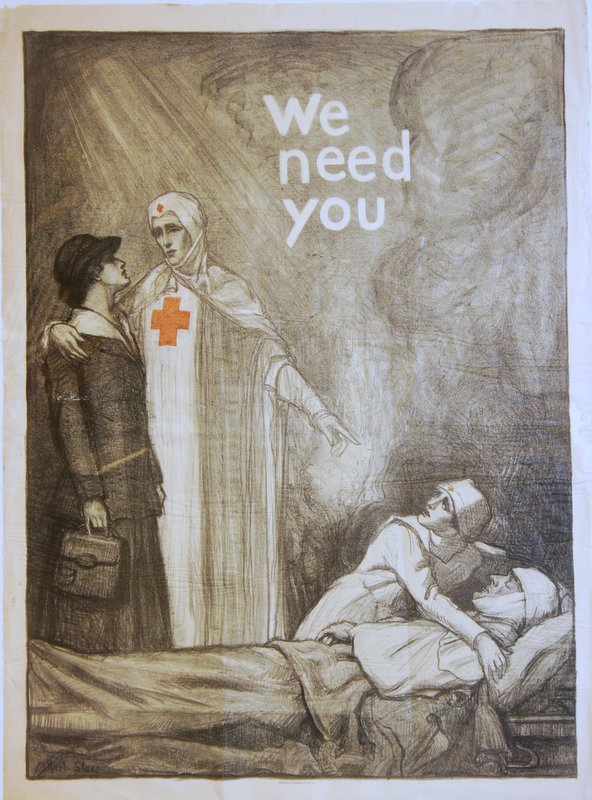Birds, shells and rocks
A victorial display case holds a collection of 90 birds, identified by Dr. Willard Stanley. The Victorian collection dates back from 1842-1875 with a total of 255 birds from North and South America. Take a tour of our 8 cases throughout the library.
The shell collection was gathered from John D. Patterson and Rev. Reuben Tinker in the 1830s from the Hawaiian Islands during their time there. Over 300 varieties of shells are represented in the combined collections. The rock and mineral collection was from the Arthur Macer and GW Patterson which was once housed in the Harter Natural Science Room is now displayed in a variety of cases to be seen throughout the library.
In the early 1900s H.W. Mossman preserved and donated most of the mammal collection to the library. Mossman, once a student of WACS later became a Professor of Anatomy at the University of Wisconsin. Our mammal collection features a red squirrel, red fox, raccoon, albino squirrel, skunk, and chipmunk. We also have 2 loons, 2 golden eagles, an albatross, 2 pheasants, a white owl, a white dove, and 4 ducks.


Our WWI poster collection features 48 propaganda posters that were framed for display.
“Artists Go to War: American Poster Propaganda in World War I”
World War I is sometimes referred to as “the poster war,” as propaganda posters were
utilized more heavily than in any other war, before or since. In an age before radio, television, or the internet, posters were the most effective way for the government to reach millions of Americans with information, instructions, and requests for help. During the war, posters were used to drum up patriotism, vilify the enemy, recruit soldiers, raise money and supplies, and conserve scarce resources. During the war years of 1917-1918, America issued more than twenty million copies of two thousand different propaganda posters. These posters were widely distributed and appeared on walls and billboards, and in shop windows, schools, churches, libraries, factories, and offices.
At the time, no American could walk into a bank to cash a check, or into a department store to buy a pair of gloves without passing dozens of war posters urging them to join the military, buy war bonds, or plant victory gardens. Artists produced posters for numerous government agencies,
including the U.S. Food Administration, the U.S. Shipping Board, the Treasury Department, and the Department of Labor, as well as for private organizations engaged in war work such as the Boy Scouts, the YWCA, the American Library Association, and the Red Cross.


